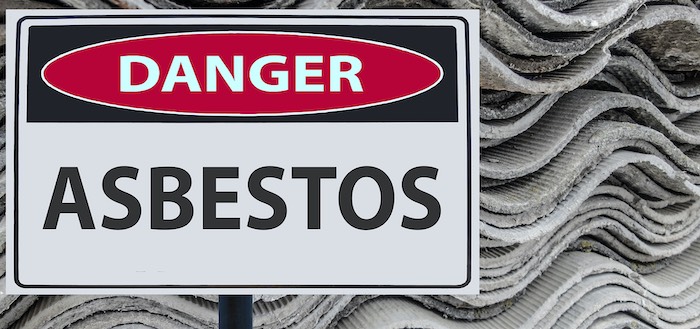How Much Exposure to Asbestos Is Dangerous?

Exposure to asbestos can cause serious health issues, such as mesothelioma. Many people are exposed to the mineral in the course of their daily lives.
However, public awareness of asbestos exposure is not very high. To many people, asbestos exposure may seem like a problem of the past. Yet, some individuals may still come into contact with asbestos in their homes, schools or places of work. Learning more about asbestos exposure and related diseases may protect you and your family.
Request a Free 2025 Mesothelioma Guide
No Safe Level of Asbestos Exposure
No level of asbestos exposure is safe. Even brief or infrequent asbestos exposure can be dangerous. There are six types of the mineral, all of which can cause asbestos-related diseases.
These diseases, such as mesothelioma, may develop with very little exposure to the mineral. There is no recorded threshold of safe asbestos exposure. However, consistent exposure and other risk factors may increase the likelihood of developing a disease.
Risk factors for asbestos-related diseases include:
- Consistent or repeated asbestos exposure
- Amount of asbestos inhaled
- Pre-existing conditions, such as Simian virus 40
- Smoking
- Age at exposure
- Genetic predisposition
While these risk factors do not guarantee an asbestos-related disease, they do increase the chance of one developing. The impact of the above risk factors vary. Research is ongoing to determine the correlation between age at exposure and asbestos diseases.
While some studies find exposure at a young age to be dangerous, other studies find the opposite. It is important to note asbestos diseases have long latency periods. Often, symptoms do not develop for 10 to 50 years after exposure. The long time period between exposure and disease development often results in diagnosis later in life. Senior citizens diagnosed with asbestos-related diseases may have experienced asbestos exposure decades prior.
Who Is Most at Risk of Asbestos Exposure?
Individuals who work around asbestos are among the most at risk of exposure. Occupational exposure is quite common in mesothelioma patients. Asbestos occupations include, but are not limited to:
- Construction workers
- HVAC workers
- Industrial workers
- Machinists and machine operators
- Oil refinery workers
- Shipyard workers
- Veterans
Asbestos was used heavily in these industries before 1980. However, with increased awareness of health issues, the mineral fell out of use. It is now regulated in many fields. Even so, people may still come into contact with asbestos in their homes or workplaces.
When Is Asbestos Dangerous?
While there is no safe level of asbestos exposure, the mineral does not pose a threat unless inhaled or ingested. Houses built with asbestos are safe if the asbestos is encapsulated and has not deteriorated.
Once asbestos-containing materials begin to break down, the fibers release into the air. Inhaling or ingesting the fibers is dangerous and difficult to avoid once it is airborne. Therefore, experts recommend removing asbestos from all structures before it becomes an issue.
Where Can I Be Exposed to Asbestos Now?
Asbestos exposure can still happen in 2020. There are two main ways this can happen:
- The mineral is still used in certain industries because there is not a comprehensive ban.
- Individuals may come into contact with historic asbestos through secondhand exposure.
Consider having asbestos inspections conducted on any machinery, vehicles or houses constructed before1980. Asbestos is likely to be in these items.
How Can I Protect Myself From Asbestos Exposure?
The best way to protect yourself from asbestos is to never come into contact with it. However, there are also ways to protect yourself when contact is unavoidable.
Reduce your risk of asbestos exposure by:
- Taking action if you suspect asbestos in your home. Have an asbestos abatement professional assess your home if you plan to renovate. This may prevent disturbing any hidden fibers.
- Wearing protective equipment around asbestos. Personal protective equipment (PPE) can shield you from inhaling asbestos. If you are often in industrial or construction settings, consider wearing PPE to protect yourself.
- Following proper disposal guidelines. Improper asbestos disposal may harm you or someone else. Follow the rules for asbestos disposal to prevent dangerous exposure.
If you have been exposed, you should seek medical attention. Symptoms such as dry cough, difficulty breathing and weight loss may signal an asbestos disease, such as mesothelioma. If you have these symptoms, consult a doctor and let them know if you suspect asbestos exposure.